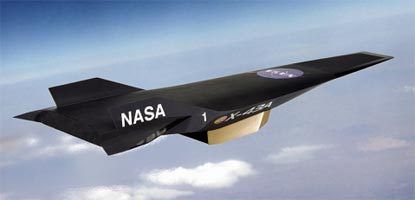-
 Exif
Exif
-
 Acroparaesthesiae
Acroparaesthesiae
-
 Perching
Perching
-
 Mean anomaly
Mean anomaly
-
 H.264
H.264
-
 Peroxisome
Peroxisome
-
 Point-to-point link
Point-to-point link
-
 HELIOS
HELIOS
-
 Teasel
Teasel
-
 Artery
Artery
-
 Lenticular galaxy
Lenticular galaxy
-
 Whale constellation
Whale constellation
-
 Katathermal
Katathermal
-
 Smart phone
Smart phone
-
 Quaternary
Quaternary
-
 Allotransplantation
Allotransplantation
-
 Ligo
Ligo
-
 Michael Faraday
Michael Faraday
-
 Extranet
Extranet
-
 Non repudiation
Non repudiation
-
 CDK
CDK
-
 Ductule
Ductule
-
 Constellation of Andromeda
Constellation of Andromeda
-
 Black hole
Black hole
-
 Chelating agent
Chelating agent
-
 Sedna
Sedna
-
 Ketoacidosis
Ketoacidosis
-
 Faraday constant
Faraday constant
-
 LDAP
LDAP
-
 Ecophysiology
Ecophysiology
Scramjet
A scramjet is a ramjet engine with supersonic combustion capable of getting the oxygen needed for combustion, not from tanks but directly from the atmosphere.
In the news: the X-43 project is part of the NASA programme for hypersonic research Hyper-X which aims to develop a future ultra-high speed plane propelled by a scramjet (Supersonic Combustible Ramjet).
The HyShot IV, a prototype developed by researchers at the university of Queensland (Australia) have made several successful tests, reaching a speed of Mach 8. In March 2010 Australian and American defence scientists successfully tested a HIFiRE hypersonic rocket. It was said to reach an atmospheric velocity of more than 5,000 kilometres per hour.
The advantages of scramjets
These supersonic jet engines - or scramjets - offer many possibilities of increasing accessibility, flexibility and safety in ultra-high speed flights in the atmosphere and in the first stage of orbital insertion. Their advantage lies in the fact that once they have been accelerated to Mach 4 by a conventional engine, they can fly in the atmosphere up to Mach 15 without having to carry a heavy tank of oxygen, as rockets have had to do up to now. Furthermore, while conventional rockets produce their full thrust during the whole of their powered flight, the power of scramjets can be controlled during flight similarly to an aircraft engine.
The difficulties in designing this type of engine
The problems encountered in the design of this type of scramjet are the following:
- Thermal problems: The air inlets are designed to capture a maximum air flow from as small a cross section as possible (to limit drag and mass), leading to substantial thermal problems: the air is at around 1000°C at Mach 5 and 2000°C at Mach 7!
- The air inlets: for the same reasons (drag, heating), the design of the air inlet geometrical shapes is crucial;
- the limited Mach number: apart from the thermal aspect, when the Mach number exceeds 8 or 10, the propulsive efficiency of the engine falls drastically. Given this, it is easy to see how unrealistic the NASP objective was (Mach 25)!

The X-43 project
Latest
Fill out my online form.



